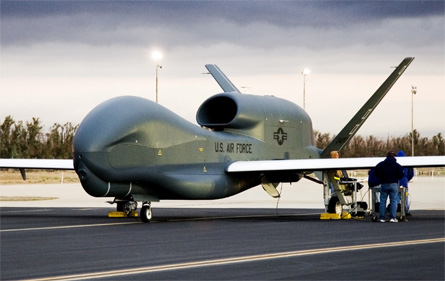In-flight electrical failure caused a Northrop Grumman EQ-4 to crash in Afghanistan on 20 August 2011, says a newly-released accident investigation report. The aircraft crashed approximately 105nm (195km) northwest of Kandahar.
Specificlly, an electrical connector to an unidentified line replacement unit (LRU) partially separated. This caused electrical damage inside the LRU, which cut power to the actuators that controlled the unmanned aircraft's ailerons and spoilers. Within 1min of the power failure, the aircraft lost control after hitting minor turbulence.
"The Board President also found, by a preponderance of the evidence, that LRU installation methods were a contributing factor in the mishap," continues the report.
After a satisfactory preflight inspection, the US Air Force aircraft departed a forward operating base - likely to have been Al Dhafra air base in the United Arab Emirates; the region's main Global Hawk operating base - and entered the area of operations over Afghanistan. Approximately 9h into the flight, remote pilots and payload operators lost contact with the aircraft. The same electrical connector controls aircraft inputs to the Global Hawk's wing-mounted flight control surfaces, making it impossible to control.
After 25s of level flight the aircraft entered a high-speed dive from its 51,000ft (15,500m) cruise altitude, which it maintained until it hit the ground. The report suggests that the wings and other pieces were sheared off during the descent.
The crashed EQ-4 was subsequently bombed by US aircraft to ensure the destruction of classified material.
 |
|---|
| © US Air Force |
"Post-mishap analyses of in-service LRU-X-1 cap screws reflect a significant departure from required values of 18-22 inch-pounds above prevailing torque," reads the report. "Improper torque, insufficient use of thread locking compound or reuse of a deformed lock washer could allow cap screws to vibrate loose during flight operations."
Maintenance procedures for the aircraft were revised following the accident. The unmanned air vehicle, an RQ-4 Block 20 converted to carry the battlefield airborne communications node communications relay payload, was one of only two such aircraft flying.
Source: Flight International
















